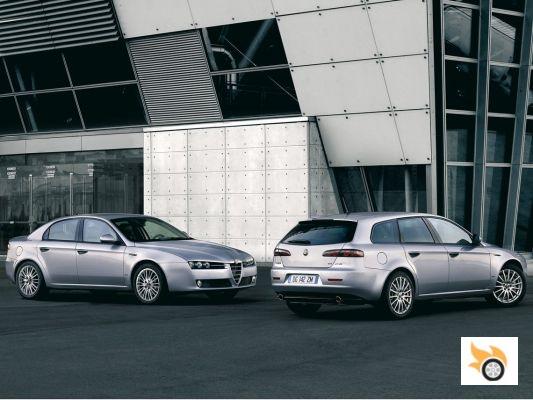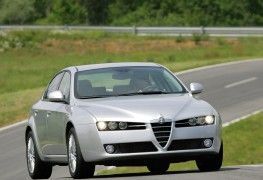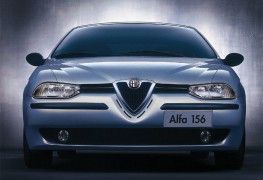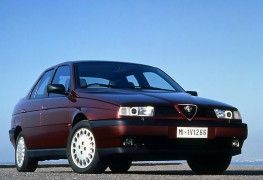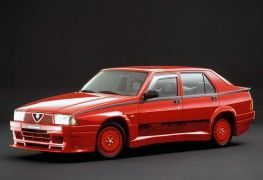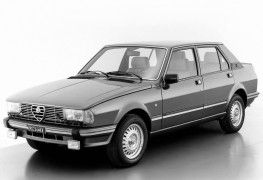Introduced at the 2005 Geneva Motor Show, it had the difficult task of replacing the 156. The 159 was supposed to be a car with more technological content, bigger and with better performance than its predecessor. Today, we know that this was not the case.
Italian bodywork...
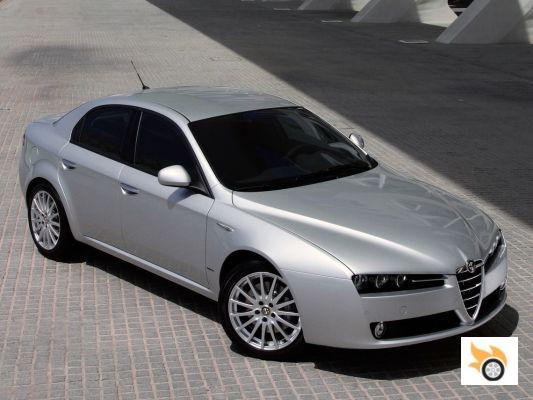
The design created by Giugiaro's studio, Italdesign, was based on the Brera concept car (Geneva Motor Show 2002), which he himself had designed. The similarity with the concept is evident in the front and flanks. Even more so when the 159 was unveiled at the Geneva Motor Show at the same time as the standard Brera. On board, the Brera and 159 even shared the same dashboard. The dashboard was based on the large lines of the 156's dashboard in a more solid key, especially the central console.
The chassis was an evolution of the ambitious "Premium" platform developed between General Motors and Fiat, but which would eventually be used only by Alfa Romeo. Initially, it was to serve as the basis for D and E segment models to be marketed by Cadillac and SAAB as well as Alfa Romeo. After the joint venture between the two groups ended, Cadillac and SAAB withdrew from the common platform project. The Arese engineers found themselves alone with an almost complete chassis and decided to adapt it for a D-segment model.
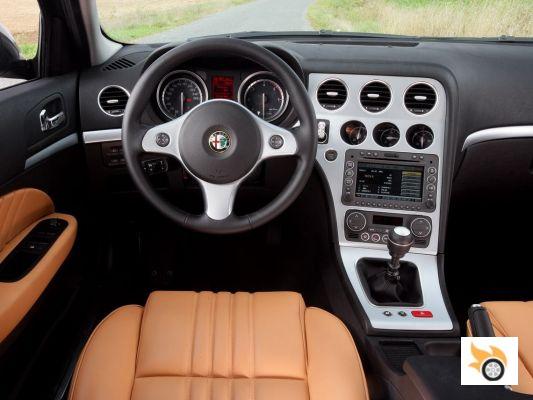
This distant origin as the basis for an E-segment of its platform can be seen in the 159's dimensions. It is 4.66 m long (+23 cm compared to the 156), 1.83 m wide (+9 cm) and 1.42 m high (+3 cm), while the wheelbase is 2,700 mm (+105 mm). The double parallelogram front suspensions had aluminium elements, while at the rear the engineers resorted to a multilink layout (three transverse arms and one longitudinal arm).
...and General Motors heart.
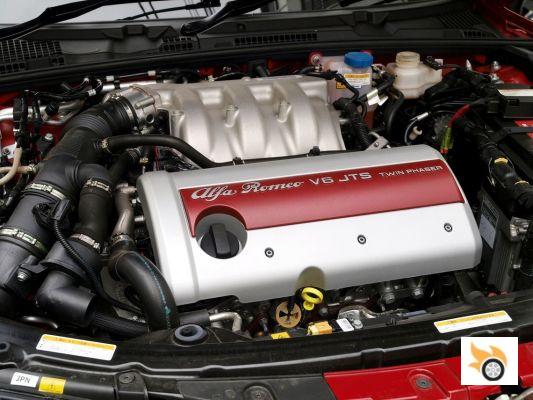
At the car's commercial launch seven engines were available, four petrol and three diesel. The petrol engines are essentially GM-sourced. The range-entry 1.8 MPi 16V 140 bhp 1.8 MPi 16V 140 bhp was of GM manufacture. This is the same Ecotec engine that could be seen in the Opel Astra and Vectra as well as the SAAB 9-3.
Similarly, the 160 bhp 1.9 JTS four-cylinder and the 185 bhp 2.2 JTS came from the General Motors engine department, but with a cylinder head modified by Alfa Romeo for the adoption of direct injection.
The 3.2 JTS was a novelty. It was a 3,195 cc 60° V6 with a 24-valve cylinder head developed by the Australian Holden specifically for Alfa Romeo and part of the GM HFV6 family. This family of engines, with a displacement of 3.6 litres, was fitted in around thirty GM group models (Buick, Opel, Cadillac, Holden, etc.). In the case of the Alfa Romeo 159, its V6 was manufactured by Holden in Australia and sent to Italy. It should be noted that all the petrol engines called JTS are equipped with chain timing, direct injection and a double stage variator, both in intake and exhaust.
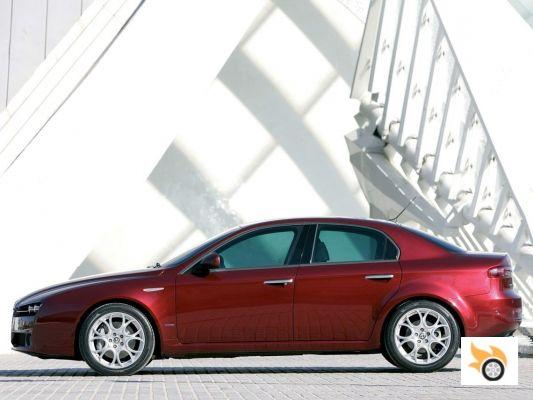
While the 4-cylinder models were front-wheel drive, the 3.2 V6 was equipped with Q4 all-wheel drive, with an evolution of the Torsen C centre differential that incorporated the front differential and thus provided 20% limited slip. The Q4 transmission could split torque between the two axles from a ratio of 22/78 to 72/28, switching from front-wheel drive to rear-wheel drive and vice versa depending on the grip conditions and pace the driver could set the car. The V6 Q4 was available with a 6-speed manual and 6-speed Q-Tronic automatic transmission.
The diesel range, meanwhile, consisted of the 1.9 JTDm available in two power levels, 120 bhp (8-valve cylinder head) and 150 bhp (16-valve cylinder head), and the 2.4 JTDm 5-cylinder with 200 bhp. Both 1.9 JTDMs are fitted with the DPF particulate filter.
159 Sportwagon
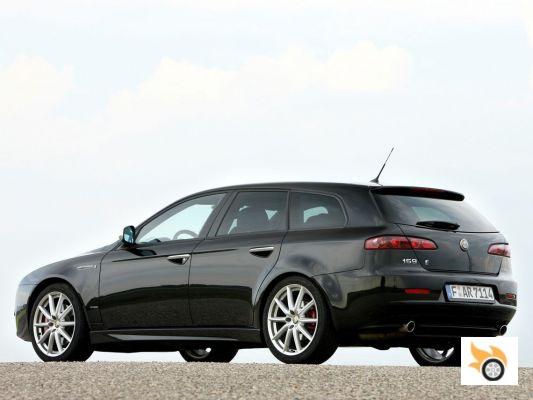
Following the success of the 156 Sportwagon, Alfa Romeo's bosses repeated the model with the 159. A year after its presentation at the 2005 Geneva Motor Show, the 159 also debuted its break bodywork at the Swiss show.
More than just a family car, the 159 Sportwagon was almost a separate model in the range, with its own elegance and sportiness (at least in terms of design). The break was also Giugiaro's work, as the Sportwagon had been designed in parallel with the saloon. Except for the obvious differences at the rear (which made the break weigh on average about 50 kg more), sedan and break were identical: from the length (4.66 m) to the range of engines and most of the body panels.
The 2008 Restyling
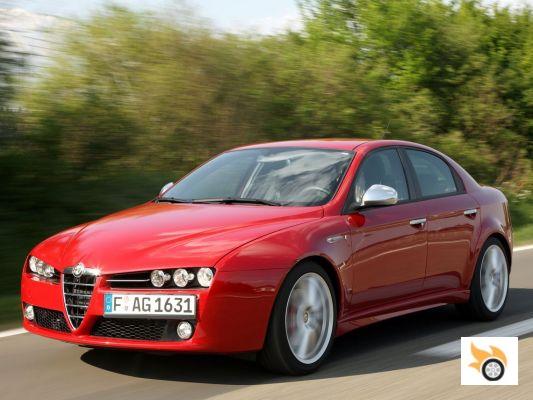
The validity of the 159's original design was never in doubt. In fact, when the 159 was updated in 2008, the aesthetic changes are so minimal (the headlight surround, for example) that the car hasn't really changed at all. The most notable changes were made to the cabin (new seats, new upholstery and a new instrument panel with a new look). However, the most important change was not visible and affected the structure of the car: aluminium was used in different parts of the chassis, reducing the weight of the chassis by 45 kg.
The 3.2 V6 was added to the range in its front-wheel drive version with a 6-speed manual gearbox. While the entire range is equipped with the Electronic Q2 self-locking differential emulator (a function of ESP that brakes the wheel that loses grip).
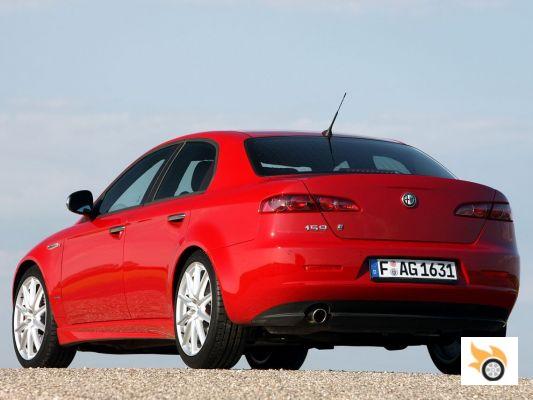
In 2009, the Geneva Motor Show is the occasion for another update, with minor changes to the interior and the introduction of two new Fiat-created engines. The first of these new engines is the 2.0 JTDM to replace the 1.9 JTDm. It is an inline 4-cylinder turbodiesel with 170 hp at 4,000 rpm and 360 Nm at 1,750 rpm. Shortly afterwards, the same engine would be offered in an Eco version with CO2 emissions of 132 g/km (142 g/km for the 2.0 JTDm). The 210 bhp 2.4 JTDM is discontinued.
The second of these new engines is a 1,742 cc (83×80.5 mm) turbocharged four-cylinder engine fitted to the 159 TBi. It puts out 200 hp at 5,000 rpm and delivers 320 Nm from as low as 1,400 rpm. The engine had a very linear and constant power delivery that gave quick throttle response. It allowed the 159 TBi to cover 0-100 km/h in 7.7 seconds.
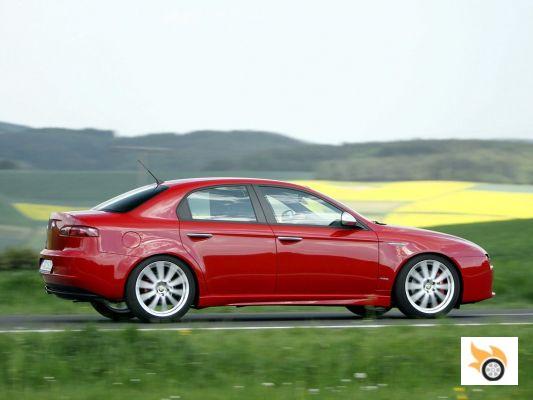
The Alfa Romeo 159 was discontinued in October 2011. As early as 2010, the most powerful engines ceased production and were no longer part of the 159 range. Last year, the petrol offering was limited to the 1,750 TBi, while in early 2011, the 159 range was limited to the 136 hp JTDM diesel engines for the saloon and 170 hp for the Sportwagon.
While the Alfa Romeo 159 lived up to its predecessor in terms of design, it didn't boast such superior dynamic handling, while its mechanicals, except perhaps the TBi, were soulless. It wasn't a bad car, but it didn't hold good cards. Having to replace the Alfa 156 was a very difficult task, as it had set the bar very high. The 159 should have been built by Alfa Romeo from start to finish, but the brand's engineers were forced to work with an unfinished chassis that was too advanced and the result of too many compromises to start from scratch. In the end, the 159 will remain a transitional model in the Alfa Romeo saloon saga.
